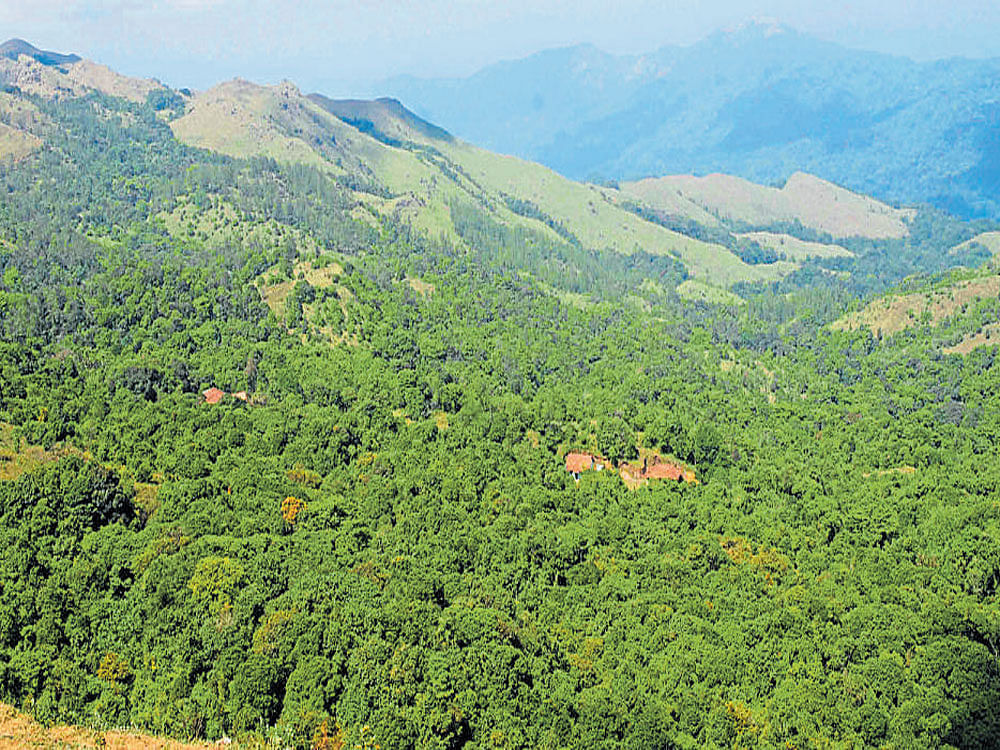
After assessing the status of 241 natural world heritage sites, the recently published IUCN World Heritage Outlook 2 report puts Western Ghats in the second highest risk category. The report noted that millions of people living in this region cause greater pressures than many other protected areas around the world.
Grazing, massive pilgrimage, tourism and mining are identified as the major threats. The report calls for intensive and targeted management to conserve existing values and remedy past damage.
The mountain chain of the Western Ghats is spread across 1, 29,037 square km and is1,490 km long and 48 to 210 km wide. It is older than the Himalayan mountains and represents geomorphic features of great importance with unique biophysical and ecological processes. Its montane forest ecosystems influence the monsoon weather pattern of India. Many important rivers such as Godavari, Nethravathi, Krishna, Vaigai, Cauvery, Kunthi and numerous other water bodies originate from the Western Ghats that run parallel to the west coast.
Its ecological significance lies in the fact that it is home to more than 5,000 species of plants, 450 of birds, 140 of mammals and 260 of reptiles, a large number of which are unique. Even now, new forms of flora and fauna, especially certain hitherto unknown species of frogs and reptiles, keep surfacing. Besides, it is rich in mineral resources, including the much sought-after iron ore, basalt and bauxite.
Concurrently, this pristine mountain range shelters as many as 25 crore people in six states, namely, Gujarat, Maharashtra, Goa, Karnataka, Kerala and Tamil Nadu. A study of the southern region, comprising Karnataka, Kerala and Tamil Nadu, showed that about 40% of the original vegetation cover was lost or land converted to other uses between 1920 and 1990. Since then, the level of environmental degradation due to reckless exploitation of natural resources has risen manifold.
Though these mountain ranges are the umbilical connection to our water regimes, neither the state governments nor the central government did ever bother to enact regulations to protect the area. A few politicians along with some religious groups and individuals with vested interests are hijacking the region’s future and gravely endangering its brittle ecology.
The money, time and effort spent on various studies and reports to safeguard the hill ranges have gone in vain. The reports of Western Ghats Expert Environment Panel constituted by the Ministry of Environment and Forests (MoEF) in 2010 under the chairmanship of renowned environmentalist Prof Madhav Gadgil and the High Level working Group (HLWG) under the chairmanship of space scientist and planning commission member Dr Kasturirangan in 2012 have been usurped by vested interests.
Wasted efforts
Following dissent, the government has invited suggestions from the states falling under the catchment of the hills to redraw the boundaries of the ecologically sensitive zone. The Kerala government appointed another committee based on whose recommendation the proposed protected area of the Western Ghats in that state was reduced by over 3,100 square km, through a draft notification.
Karnataka has taken a stand that no new restrictions can be placed on “eco tourism” and all existing power plants will not be subject to any restrictions in their functioning or expansions. The state refused to ban stone quarrying and sand mining stating that it is integral to local development needs. Of the 1,553 villages in Karnataka that were included in the ESA as per Kasturirangan report, the state has recommended that only 153 villages be included in the ESA.
Other states were slow-moving or callous in responding to the suggestion of the MoEF and thus the final decision is still pending. The hefty amount and effort spent on all these committees have gone to no avail. Western Ghats indirectly support more than 200 million Indians in various ways. The final call on the strategies for shielding whatever is left of the mountains’ natural wealth will have to be taken by the government.
Unfortunately, governmental decisions like the latest National Forest Policy 2018 (DNFP-2018) are misleading. Recommendations to promote commercial forestry from an economic angle disregarding the ecological perspective are perilous. In the wake of the spread of several pathogens like Nipah virus through fruit bats, there is a need to stop destroying habitats of such animals. Preserving forests protects not just biodiversity, but also human lives.
(The writer is Professor, Department of Zoology, Christ University, Bengaluru)